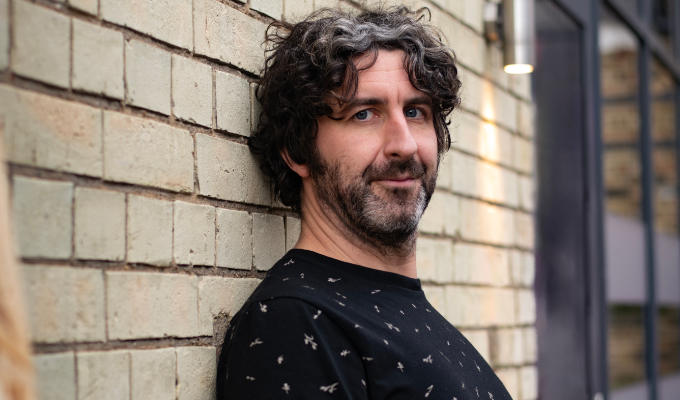The Edinburgh Fringe Survival Guide, by Mark Fisher
Book review by Steve Bennett
Every so often, some regimental old Tory will bark out a call for the return of National Service, arguing that the best way to instill great character in the feckless youth of today is to teach them how to kill foreigners most efficiently.
But playwright Mark Ravenhill has a better idea. His view is that the world would be a better place if everybody took a show to the Edinburgh Fringe at least once in their lives, since the intense and inspiring month requires a unique community spirit, tireless work ethic and incredible optimism.
His comments come in the foreword to this useful manual about putting on a show at what is the world’s biggest arts festival, by quite some margin. The book is designed primarily with theatre groups in mind, but there’s plenty of tips comedians could learn, even those who’ve been before.
The scale of the festival is daunting – every year the central Fringe office releases statistics of how many tens of thousands of performances take place in this three-and-a-half week stint, although they are nothing but characters on a page unless the unique atmosphere is experienced first-hand.
The organic way the festival has expanded into this behemoth, combined with the open-door policy towards performers, means it’s even more overwhelming to know how to put on a show. But preparation is key if the grueling, relentless processes is not to break you.
Tales of woe are all part of the landscape, of course – the nightmare gigs to little or no audience, the ridiculous, demeaning publicity stunts that no one saw, the thousands of pounds tossed away on a vanity project. Yet there’s something compelling about the Fringe that keeps so many of us coming back year after year, in whatever capacity we can.
Mark Fisher, the author of the Edinburgh Fringe Survival Guide, is typical in that he took part in four performances of a student play at 4.15pm in 1983, and that was enough to hook him. He returned three years later to work in the Fringe office and has not missed a festival since. He’s now a critic for the Guardian and Variety, and has been editor of Scottish what’s-on magazine The List.
He knows what he’s talking about, but also has the good mind to let others with more direct experience have their say. Again the emphasis is on theatre, but he’s interviewed the likes of comics Ed Byrne and Nick Doody, agent Marlene Zwicker (whose clients include Jimeoin and Daniel Sloss) and industry types such as Tommy Sheppard, of The Stand, who points out the attraction of the Fringe: ‘I don’t think there’s anywhere else in the world where you can do 24 nights on the trot and, as a comedian, to get the material honed, get confidence in it, in a very short space of time, it’s an unparalleled opportunity.’
And, contrary to what you might think, it’s not just new comedians who get better from the process. As Byrne says: ‘There’s a relentlessness; you’re in the goldfish bowl like you never normally are. If you’re of a reasonable profile, then there’ll be two or three members of the press and/or the entertainment industry every night. So every show is like a career breaker… So there’s a lot of pressure.’
The book covers all the topics you might expect: how the Fringe is set up, the different types of venues and how they operate, the importance or otherwise of having a promoter or publicist on your team. The advice Fisher gives most of all, though, is to refer the reader to Chapter 4.
Chapter 4 is barely eight pages long, but it covers ‘The motivation’, asking the would-be participant to question exactly why they want to be on the Fringe. There are probably as many answers as there are shows.
As Fisher says: ‘For one company it might be playing to a decent-sized audience; to another it might be a booking for an international tour. A top comedian might be content with a healthy pay cheque; the performers in a student revue might be happy to have partied every night. Some want to leave with a set of positive newspaper reviews, others hope to be spotted by an agent. Some care only about developing their performing skills; others will not rest easy until they have won a major award.’
Although Miriam Attwood, the Fringe’s former media manager, urges a reality-check too. ‘When people don’t fulfil their dreams it’s normally because those dreams are fairly wild,’ she says.
The other point repeatedly made is that you have to have faith in your show and a passion and determination to do it justice. It sounds like a bland, obvious assertion, but it can’t be stated enough how important that is for surviving the Fringe.
If you’re thinking of taking part in this year’s festival, the truth is you’re probably already too late. Most venues are nearly fully programmed and the final deadline is looming large. But staging a Fringe show is no slight undertaking, and, Fisher sensibly says, should be a year in the planning. So read this handy guide, go to this year’s event with a fresh pair of eyes, and you’ll be better placed for 2013.
The Fringe is an inspirational place, and Fisher reflects that in his enthusiasm; but that’s tempered with just the right amount of practical, pragmatic advice. The bottom line is you’ll have a better festival as a performer if you read this book than if you don’t.
- The Edinburgh Fringe Survival Guide: How to Make Your Show A Success by Mark Fisher is published by Methuen Drama, priced £9.99. Click here to buy from Amazon.
Published: 26 Mar 2012






